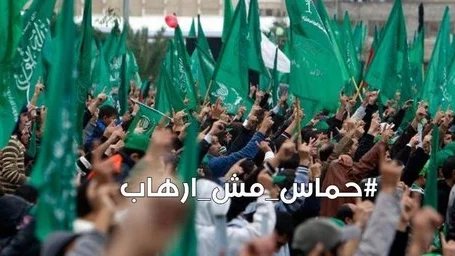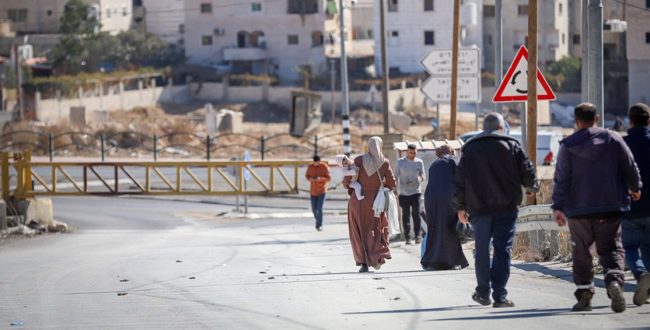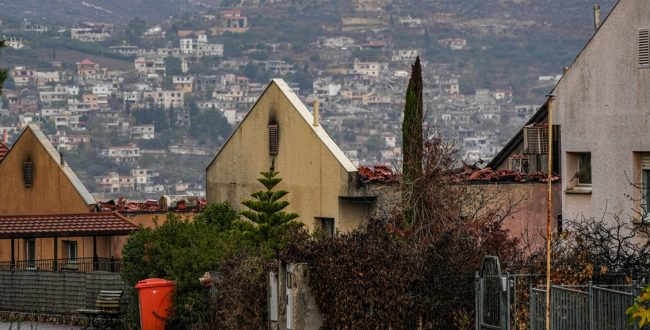In Israel, Hamas is seen only as a Jihadi terrorist organization. This view informs every discussion of the movement’s actions and positions, yet is misaligned with reality and with the way Hamas sees itself. Clinging to this misconception compromises our ability to understand Hamas and to deal with the question of Gaza, as well as the Israeli-Palestinian issue in general.
One thing is clear – Hamas is a bitter enemy of Israel. Its military wing, the Izz a-Din al-Qassam Brigades, has carried out murderous terror attacks against Israeli citizens. Yet seeing Hamas only as a terrorist organization overlooks the meaningful social background from which the movement emerged and the massive strategic change it has been undergoing for over a decade.
Unlike other Jihadi and resistance groups in Palestine, Hamas is deeply rooted in Palestinian society. Obviously, its violent actions are usually at the center of attention. Yet as Paula Caridi demonstrated in her book Hamas: From Resistance to Government?, the movement is profoundly committed to social action. Hamas was born of Mujama al-Islamiya, the Gaza arm of the Muslim Brotherhood, which ran mosques and charities throughout the Occupied Territories. The transition from the Brotherhood to Hamas, i.e. the shift from social-religious activism to resistance and establishment of a military wing, was completed only in 1988, after the first intifada broke out.
Resistance, apologetics, integration
In the early 1990s, Islamic/Islamist Hamas was the only opposition to the PLO-Fatah. Fatah was inclined to compromise with Israel and abandon the armed struggle; Hamas rejected the peace process, worked to undermine it and objected to the Palestinian Authority. In 1994, Hamas ideologue Ibrahim al-Makadmeh called for attacks on Israel to force it to withdraw from the peace process and dismantle the PA. Yet while Hamas boycotted the first PA elections in 1996, by 2006 – after the second intifada – it not only participated but even won. The victory was a watershed moment in the movement’s transition into politics.
In the 2006 elections, Hamas’ Reform and Change List published a comprehensive political platform, along with a cessation of militant activity – proof that the movement’s political leadership can rein in the military wing at will. In a long, gradual process since then, Hamas has grown increasingly political, institutionalized, and eager for international recognition. This peaked with the Document of General Principles and Policies published in May 2017, which demonstrated growing readiness for compromise with Israel. More proof of this conceptual shift is the recent move from violent resistance and terrorism to a popular unarmed struggle. Despite ups and downs to the process, the general direction is clear.
From charter to document of principles
The differences between the 1988 Hamas charter and the 2017 document of principles encapsulate thirty years of development. The charter is an Islamist, anti-national, anti-Semitic document in which religion is an independent variable, Palestinian nationalism is the dependent variable, and the particular Palestinian identity is first mentioned only in article 6. In the new document, Hamas is defined in the first article as “a Palestinian Islamic national liberation and resistance movement. Its goal is to liberate Palestine and confront the Zionist project.” The document establishes Hamas as a national movement that draws its authority and modes of action from political Islam, yet only inasmuch as this serves Palestinian nationalism.
Another important difference is the movement’s declared goals. The original charter talks of Jihad, resistance to the West and founding an Islamic state. The new document portrays a movement angling for space within the existing system, in order to lead efforts to establish a Palestinian state. Inkling of this sea-change in Hamas’ goals and strategy were already visible in the movement’s outright rejection of enthusiastic calls by Al-Qaeda and other Jihadist groups to declare an Islamic state in Gaza after the 2007 takeover.
Ideology
In 2010, Khaled Mashal gave a detailed interview to the Muslim Brotherhood daily in Jordan, A-Sabeel, about Hamas’ political philosophy, its views on Israel and the peace process, and its policies on the Palestinian, Arab and international fronts. Already then, Mashal spoke pragmatically and in favor of accepting international diplomatic norms, steering clear of militant rhetoric.
In 2014, the Al-Zaytouna Centre for Studies and Consultations in Beirut published a book titled Islamic Resistance Movement-Hamas: Studies of Thought and Experience – a collection of essays by Palestinian researchers and Hamas members about themselves, in Arabic. The recurring theme in the essays is the “normalization” of Hamas: its transformation into a legitimate political movement. Professor Yousef Rizka, literature researcher at Gaza University, former minister in the PA government and political advisor to Isma’il Haniyeh, analyzed “The Political Ideology of Hamas”, addressing issues such as mosque and state, law and constitution, nationality, secularism, democracy and human rights; Mustafa Abu Sway, a professor of Islam at Al-Quds University and imam at the Al-Aqsa Mosque, examined “Hamas’ Views of Jews, Judaism, Zionism, Zionists and the State of Israel”; and Sami Khater, a member of Hamas’ Political Bureau, wrote of “Hamas’ Vision for Managing the Conflict with the Zionist Enemy”. All three clearly drew away from the movement’s traditional anti-Semitism and their texts reveal a consistent trend of apologetics, distance from the 1988 charter, and a call for ideological change couched in new Islamic, academic and political rhetoric.
Even terrorism is presented in the book as a necessary evil for saving lives. The argument is that this creates a balance of fear with Israel as a counter-measure to the killing of Palestinian civilians, based on the Islamic principle of reciprocity (a-rad bil-mithl). While such talk may be uncomfortable for Israeli ears, it marks a significant change in terminology, reframing political violence as undesirable.
Summary
Hamas is probably the most popular Palestinian faction in the Occupied Territories at present. Unlike the Islamic Jihad, Hamas grew out of civil society and is seeking to broaden its impact in that area. The gaps between the original Hamas charter and the new document of principles attest to the changes the movement has undergone in thirty years of its existence, including during its effective rule over Gaza.
In fact, Hamas’ willingness to accept the idea of a Palestinian state within 1967 borders with East Jerusalem as its capital, without formally acknowledging the State of Israel or abandoning the right of return, are the movement’s response to the Arab Peace Initiative and to the Palestinian Authority. Hamas’ politicization, its openness to institutionalization and compromise, and its search for international approval are a window of opportunity for Israel.
Translated by Michelle Bubis


















